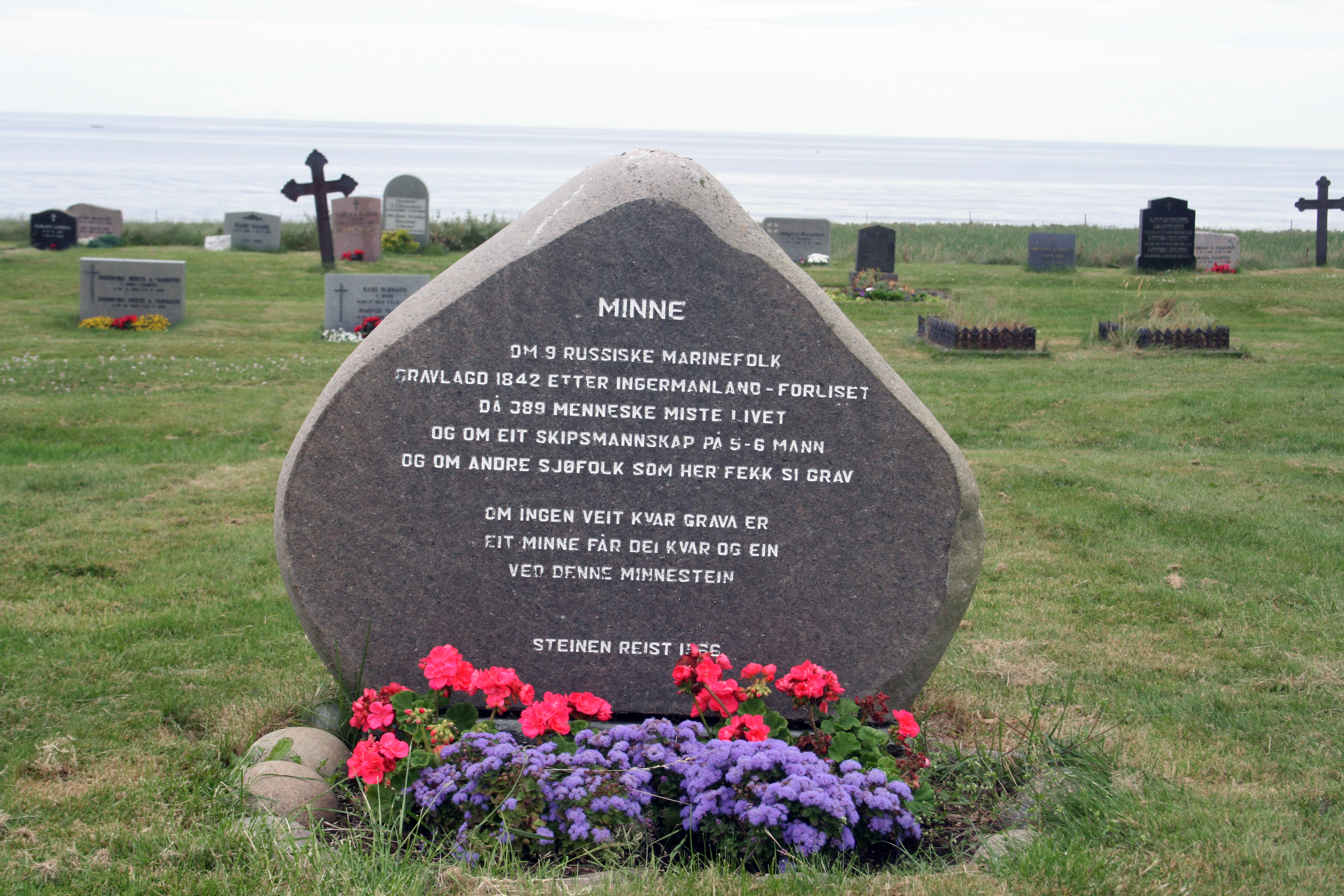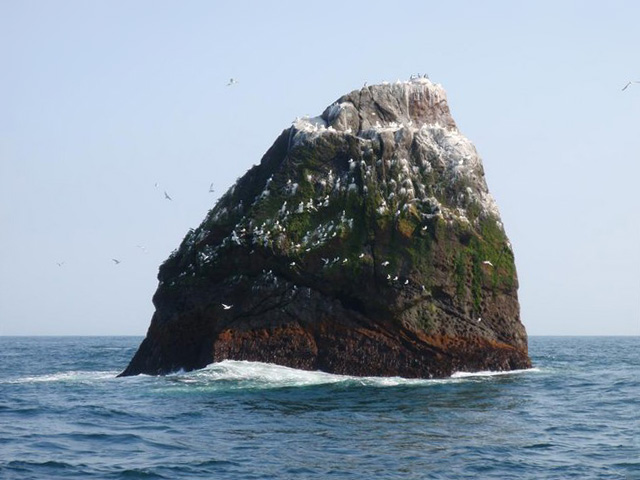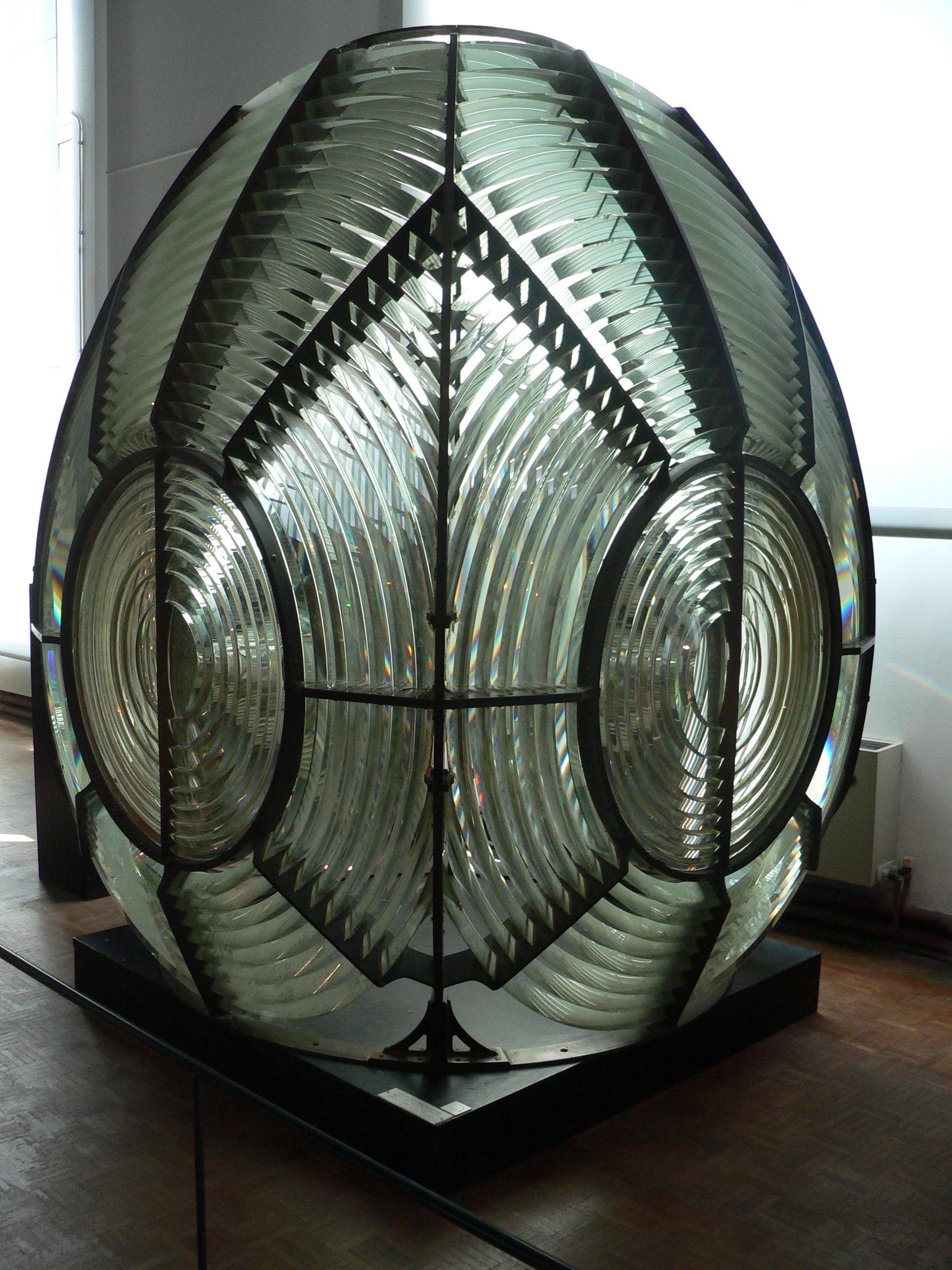|
Grønningen Lighthouse
Grønningen Lighthouse () is a coastal lighthouse in the municipality of Kristiansand in Agder county, Norway. The lighthouse was built in 1878 to improve the marking of the shipping lane into Kristiansand harbor. In 1842, the Russian ship-of-the-line Ingermanland had collided with the Grønningen islet, leading to a catastrophe. The current lighthouse sits on Grønningen, a bare islet in the Kristiansandsfjord, and it marks the eastern side of the main shipping channel that leads inland to the port of the city of Kristiansand. The other lighthouse, which marks the western entrance, Oksøy Lighthouse, lies about to the west. The tall square concrete tower is white with a red roof. It is attached to one end of a -storey lighthouse keeper's house. The light sits at an elevation of and it emits two white, red, or green flashes (depending on direction) every ten seconds. The light is a 4th order Fresnel lens. It can be seen for up to . The lighthouse was first put into ... [...More Info...] [...Related Items...] OR: [Wikipedia] [Google] [Baidu] |
Agder
Agder is a counties of Norway, county () and districts of Norway, traditional region in the southern part of Norway and is coextensive with the Southern Norway region. The county was established on 1 January 2020, when the old Vest-Agder and Aust-Agder counties were merged. Since the early 1900s, the term Southern Norway, Sørlandet ("south country, south land, southland") has been commonly used for this region, sometimes with the inclusion of neighbouring Rogaland. Before that time, the area was considered a part of Western Norway. The area was a medieval Petty kingdoms of Norway, petty kingdom, and after Norway's unification became known as ''Egdafylki'' and later ''Agdesiden'', a county within the kingdom of Norway. The name Agder was not used after 1662, when the area was split into smaller governmental units called Nedenæs, Råbyggelaget, Lister, and Mandal. The name was resurrected in 1919 when two counties of Norway that roughly corresponded to the old Agdesiden county w ... [...More Info...] [...Related Items...] OR: [Wikipedia] [Google] [Baidu] |
Norway
Norway, officially the Kingdom of Norway, is a Nordic countries, Nordic country located on the Scandinavian Peninsula in Northern Europe. The remote Arctic island of Jan Mayen and the archipelago of Svalbard also form part of the Kingdom of Norway. Bouvet Island, located in the Subantarctic, is a Dependencies of Norway, dependency, and not a part of the Kingdom; Norway also Territorial claims in Antarctica, claims the Antarctic territories of Peter I Island and Queen Maud Land. Norway has a population of 5.6 million. Its capital and largest city is Oslo. The country has a total area of . The country shares a long eastern border with Sweden, and is bordered by Finland and Russia to the northeast. Norway has an extensive coastline facing the Skagerrak strait, the North Atlantic Ocean, and the Barents Sea. The unified kingdom of Norway was established in 872 as a merger of Petty kingdoms of Norway, petty kingdoms and has existed continuously for years. From 1537 to 1814, Norway ... [...More Info...] [...Related Items...] OR: [Wikipedia] [Google] [Baidu] |
Coastal Lighthouse
A lighthouse is a tower, building, or other type of physical structure designed to emit light from a system of lamps and lens (optics), lenses and to serve as a beacon for navigational aid for maritime pilots at sea or on inland waterways. Lighthouses mark dangerous coastlines, hazardous shoals, reefs, rocks, and safe entries to harbors; they also assist in aerial navigation. Once widely used, the number of operational lighthouses has declined due to the expense of maintenance and the advent of much cheaper, more sophisticated, and more effective electronic navigational systems. History Ancient lighthouses Before the development of clearly defined ports, mariners were guided by fires built on hilltops. Since elevating the fire would improve visibility, placing the fire on a platform became a practice that led to the development of the lighthouse. In antiquity, the lighthouse functioned more as an entrance marker to ports than as a warning signal for reefs and promontory, prom ... [...More Info...] [...Related Items...] OR: [Wikipedia] [Google] [Baidu] |
Kristiansand
Kristiansand is a city and Municipalities of Norway, municipality in Agder county, Norway. The city is the fifth-largest and the municipality is the sixth-largest in Norway, with a population of around 116,000 as of January 2020, following the incorporation of the municipalities of Søgne and Songdalen into the greater Kristiansand municipality. In addition to the city itself, Statistics Norway count four other densely populated areas in the municipality: Skålevik in Flekkerøy with a population of 3,526 in the Vågsbygd borough, Strai with a population of 1,636 in the Grim borough, Justvik with a population of 1,803 in the Lund borough, and Tveit with a population of 1,396 () in the Oddernes borough. Kristiansand is divided into five boroughs; -Grim, Vest-Agder, Grim, which is located northwest in Kristiansand with a population of 15,000; Kvadraturen (Kristiansand), Kvadraturen, which is the centre and downtown Kristiansand with a population of 5,200; Lund, Kristiansand, Lund ... [...More Info...] [...Related Items...] OR: [Wikipedia] [Google] [Baidu] |
Ship-of-the-line
A ship of the line was a type of naval warship constructed during the Age of Sail from the 17th century to the mid-19th century. The ship of the line was designed for the naval tactic known as the line of battle, which involved the two columns of opposing warships manoeuvering to volley fire with the cannons along their broadsides. In conflicts where opposing ships were both able to fire from their broadsides, the faction with more cannons firingand therefore more firepowertypically had an advantage. From the end of the 1840s, the introduction of steam power brought less dependence on the wind in battle and led to the construction of screw-driven wooden-hulled ships of the line; a number of purely sail-powered ships were converted to this propulsion mechanism. However, the rise of the ironclad frigate, starting in 1859, made steam-assisted ships of the line obsolete. The ironclad warship was predecessor to the 20th-century battleship, whose very designation is itself a cont ... [...More Info...] [...Related Items...] OR: [Wikipedia] [Google] [Baidu] |
Ingermanland (Ship, 1842)
''Ingermanland'' (Russian language, Russian: Ингерманланд) was a three-masted, fully-rigged Iezekiil‘-class third-rate ship of the line, built in Arkhangelsk, Russian Empire, Russia, in 1842. She was intended for service in the Imperial Russian Navy′s Baltic Fleet. Ships of this type were characterized by good seaworthiness, practical location of guns, and rational interior planning. The ship was armed with seventy-four 24- and 36-pound cannons.Warships in the Baltic fleet: Ingermanland randewy.ru Fatal maiden voyage On August 8, 1842, the ship left Arkhangelsk on her maiden voyage. To reach her destination of Kronstadt in the Gulf of Finland, she had to make a rough voyage through the White Sea, Barents Sea, Norwegian Sea, North Sea, Skagerrak, and Baltic Sea. On board were j ...[...More Info...] [...Related Items...] OR: [Wikipedia] [Google] [Baidu] |
Islet
An islet ( ) is generally a small island. Definitions vary, and are not precise, but some suggest that an islet is a very small, often unnamed, island with little or no vegetation to support human habitation. It may be made of rock, sand and/or hard coral; may be permanent or tidal (i.e. surfaced reef or seamount); and may exist in the sea, lakes, rivers or any other sizeable bodies of water. Definition As suggested by its origin ''islette'', an Old French diminutive of "isle", use of the term implies small size, but little attention is given to drawing an upper limit on its applicability. The World Landforms website says, "An islet landform is generally considered to be a rock or small island that has little vegetation and cannot sustain human habitation", and further that size may vary from a few square feet to several square miles, with no specific rule pertaining to size. Other terms * Ait (/eɪt/, like eight) or eyot (/aɪ(ə)t, eɪt/), a small island. It is espe ... [...More Info...] [...Related Items...] OR: [Wikipedia] [Google] [Baidu] |
Oksøy Lighthouse
Oksøy Lighthouse () is a coastal lighthouse in the municipality of Kristiansand in Agder county, Norway. The lighthouse sits on the islet of Oksøy which is located in the Kristiansandsfjorden, just east of the island of Flekkerøya. The lighthouse marks the western side of the main shipping channel that leads inland to the port of the city of Kristiansand. The other lighthouse, which marks the eastern entrance, Grønningen Lighthouse, lies about to the east. The lighthouse has a racon signal, emitting a morse code "O" (- - -). The lighthouse was first built in 1832, but it was rebuilt in 1900. The present tall cylindrical cast iron tower is white with two red bands painted around it. The light sits at an elevation of and it emits two white flashes every 45 seconds. The light is a 1st order Fresnel lens which emits a light with an intensity of 4,401,000 candelas. It can be seen for up to in all directions. Additionally, there is a secondary light located lower down ... [...More Info...] [...Related Items...] OR: [Wikipedia] [Google] [Baidu] |
Fresnel Lens
A Fresnel lens ( ; ; or ) is a type of composite compact lens (optics), lens which reduces the amount of material required compared to a conventional lens by dividing the lens into a set of concentric annular sections. The simpler Dioptrics, dioptric (purely refraction, refractive) form of the lens was first proposed by Georges-Louis Leclerc, Comte de Buffon, and independently reinvented by the French physicist Augustin-Jean Fresnel (1788–1827) for use in lighthouses. The Catadioptric system, catadioptric (combining refraction and reflection) form of the lens, entirely invented by Fresnel, has outer Prism (optics), prismatic elements that use total internal reflection as well as refraction to capture more oblique light from the light source and add it to the beam, making it visible at greater distances. The design allows the construction of lenses of large aperture and short focal length without the mass and volume of material that would be required by a lens of conventional ... [...More Info...] [...Related Items...] OR: [Wikipedia] [Google] [Baidu] |
Den Norske Turistforening
The Norwegian Trekking Association (, DNT) is a Norwegian association which maintains mountain trails and cabins in Norway. The association was founded on 21 January 1868 with the scope "to help and develop tourism in this country". Today the goal is to work for simple, secure and environmentally friendly outdoor activities. DNT has currently more than 300,000 individual members, and 57 local chapters. It also has several "honorary members", prominent people who have shown a keen interest in Norwegian nature and given the country publicity as a tourist destination, among them Kofi Annan and Katie Melua. The secretary-general of the association is Dag Terje Klarp Solvang. The mountains of Norway have always been utilised by the Norwegian people since the first Norwegians followed the reindeer when the ice cap retracted ten thousand years ago. DNT's first hut was Krokan by the Rjukan waterfall. The waterfall was later harnessed for hydropower production and the hut was sold. Tod ... [...More Info...] [...Related Items...] OR: [Wikipedia] [Google] [Baidu] |
Lighthouses In Norway
The coast of Norway is long and there have been a total of 212 lighthouses along it, but no more than 154 have ever been operational at the same time. The first, Lindesnes Lighthouse, opened in 1655; the newest Lighthouse, Anda Lighthouse, was finished in 1932. The first lighthouses were private operations, but in 1821 the government made the Channel and Harbor Inspector responsible for lighthouses in Norway. A dedicated Lighthouse Administration was set up in 1841. The lighthouses are today mostly automated and since 1974, run by the Norwegian Coastal Administration. Two lightvessels had been operated along the Norwegian coast. "Enigheden" off Ålesund from 1856 was replaced with Lepsøyrev Lighthouse in 1879, and "Ildjernsflu" moored off Nesodden from 1914 until it was scrapped in 1968. This list, while not complete, is sorted by location along the shipping lane from the border with Sweden in the south to Russia in the northeast. The Norwegian Coastal Administration mai ... [...More Info...] [...Related Items...] OR: [Wikipedia] [Google] [Baidu] |





